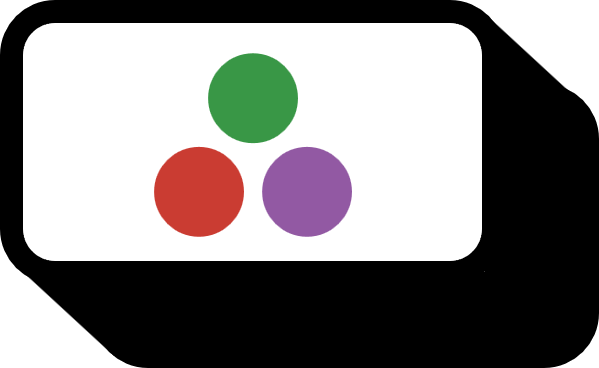줄리아에서 클러스터링 패키지 사용하는 법
개요
줄리아에서는 클러스터링을 위한 패키지로써 Clustering.jl이 제공된다1. 구현되어 있는 알고리즘으로는 다음과 같은 것들이 있다:
- K-means
- K-medoids
- Affinity Propagation
- Density-based spatial clustering of applications with noise (DBSCAN)
- Markov Clustering Algorithm (MCL)
- Fuzzy C-Means Clustering
- Hierarchical Clustering
- Single Linkage
- Average Linkage
- Complete Linkage
- Ward’s Linkage
코드
DBSCAN

DBSCAN(Density-based spatial clustering of applications with noise)은 dbscan() 함수로 구현되어 있다. $p$차원의 데이터가 $n$ 개 있다면, $p \times n$ 사이즈의 행렬과 반경radius이 인수로써 주어져야 한다.
julia> points = [iris.PetalLength iris.PetalWidth]'
2×150 adjoint(::Matrix{Float64}) with eltype Float64:
1.4 1.4 1.3 1.5 1.4 1.7 1.4 1.5 1.4 1.5 1.5 … 5.4 5.6 5.1 5.1 5.9 5.7 5.2 5.0 5.2 5.4 5.1
0.2 0.2 0.2 0.2 0.2 0.4 0.3 0.2 0.2 0.1 0.2 2.1 2.4 2.3 1.9 2.3 2.5 2.3 1.9 2.0 2.3 1.8
julia> dbscaned = dbscan(points, 0.5)
DbscanResult(DbscanCluster[DbscanCluster(50, [1, 2, 3, 4, 5, 6, 7, 8, 9, 10 … 41, 42, 43, 44, 45, 46, 47, 48, 49, 50], Int64[]), DbscanCluster(100, [51, 52, 53, 54, 55, 56, 57, 58, 59, 60 … 141, 142, 143, 144, 145, 146, 147, 148, 149, 150], Int64[])], [1, 51], [50, 100], [1, 1, 1, 1, 1, 1, 1, 1, 1, 1 … 2, 2, 2, 2, 2, 2, 2, 2, 2, 2])
julia> dbscaned |> propertynames
(:clusters, :seeds, :counts, :assignments)
DBSCAN의 결과는 DbscanResult라는 구조체로 리턴된다. .assignments, .cluster 정도가 우리에게 필요하다.
각 클러스터 별로 어떤 데이터포인트가 속하는지는 다음과 같이 getproperty() 함수를 통해 얻을 수 있다.
julia> getproperty.(dbscaned.clusters, :core_indices)
2-element Vector{Vector{Int64}}:
[1, 2, 3, 4, 5, 6, 7, 8, 9, 10 … 41, 42, 43, 44, 45, 46, 47, 48, 49, 50]
[51, 52, 53, 54, 55, 56, 57, 58, 59, 60 … 141, 142, 143, 144, 145, 146, 147, 148, 149, 150]
각각의 데이터포인트가 어떤 클러스터에 속하는지는 다음과 같이 .assignments 프로퍼티를 통해 알 수 있다.
julia> dbscaned.assignments
150-element Vector{Int64}:
1
1
1
1
1
1
1
1
1
1
1
1
1
1
1
⋮
2
2
2
2
2
2
2
2
2
2
2
2
2
2
시각화에 대한 팁으로써, 클러스터는 임의의 정수로 배정되므로 점도표를 그릴 때 *.assignments를 그대로 color 옵션에 넣어 주면 다음과 같이 각 클러스터에 대응되는 색이 지정된다.
scatter(iris.PetalLength, iris.PetalWidth,
xlabel = "PetalLength", ylabel = "PetalWidth",
color = dbscaned.assignments)

클러스터링이 잘 수행된 것을 확인할 수 있다.
전체 코드
using Clustering
using RDatasets
iris = dataset("datasets", "iris")
scatter(iris.PetalLength, iris.PetalWidth, xlabel = "PetalLength", ylabel = "PetalWidth")
png("iris")
points = [iris.PetalLength iris.PetalWidth]'
dbscaned = dbscan(points, 0.5)
dbscaned |> propertynames
getproperty.(dbscaned.clusters, :core_indices)
dbscaned.assignments
scatter(iris.PetalLength, iris.PetalWidth,
xlabel = "PetalLength", ylabel = "PetalWidth",
color = dbscaned.assignments)
환경
- OS: Windows
- julia: v1.9.0
- Clustering v0.15.4

 저희들의 저서 「줄리아 프로그래밍」이 2024 세종도서 학술부문에 선정되었습니다!
저희들의 저서 「줄리아 프로그래밍」이 2024 세종도서 학술부문에 선정되었습니다!

